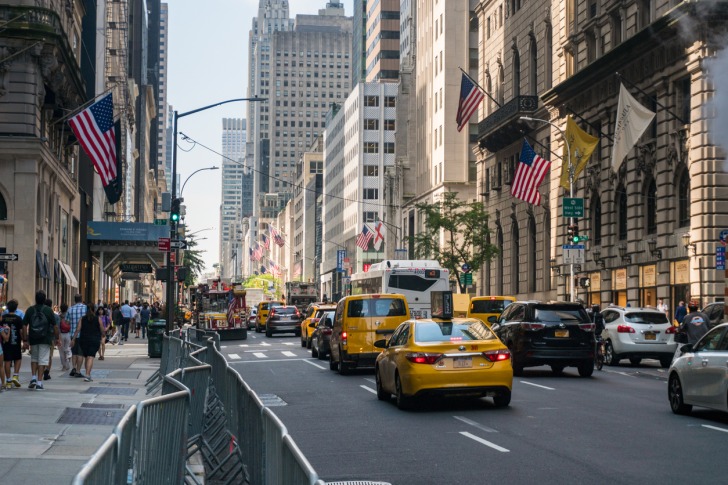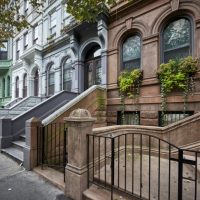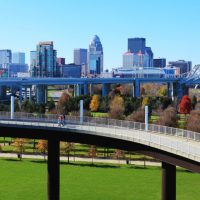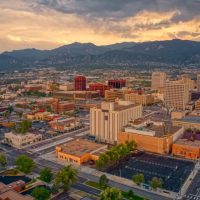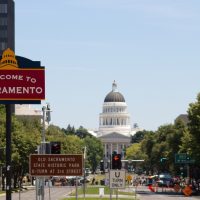Manhattan is the smallest yet most densely populated of New York City’s five boroughs.
It’s home to some of America’s most iconic landmarks, including Broadway, Central Park, Times Square, and the World Trade Center.
There are over fifty neighborhoods in Manhattan to choose from for those considering making this city their new home.
However, it’s important to bear in mind that some neighborhoods are safer than others.
By doing your research in advance, you can make a better decision about where to live, taking into account your particular wants and needs.
Here’s a brief synopsis of 10 of the safest neighborhoods in the city.
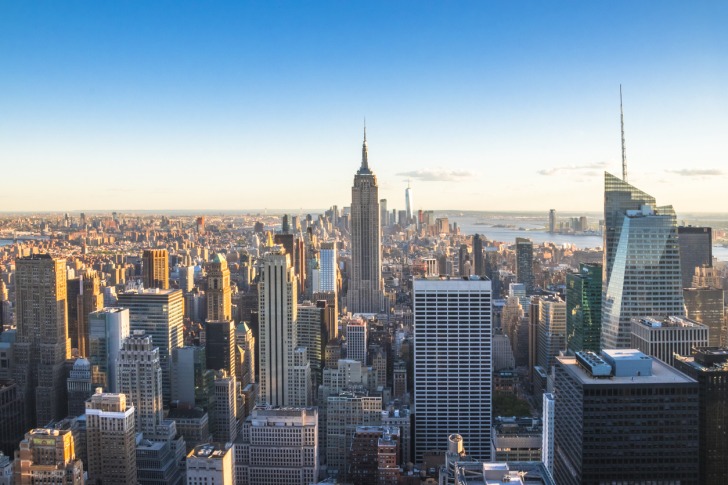
Contents
10 Safest Neighborhoods in Manhattan
Safety is a priority when looking for a new home.
These Manhattan neighborhoods offer safety, security and so much more.
1. Battery Park City
Battery Park City has a lot to offer those looking to call Manhattan their home.
You get a great view of the Hudson River, scenic parks, and upscale restaurants.
There are plenty of sidewalks and paths to make it easy to get around on foot.
You can also rely on public transport from the R, W, and 1 subway lines.
Most residents live in condos or high-rise luxury buildings.
Battery Park City is one of the safest neighborhoods in the city, with a crime rate that’s 38% lower than the national average.
2. Roosevelt Island
At one time, Roosevelt Island was the site of a smallpox hospital and an insane asylum.
Today it’s a beautiful, tranquil neighborhood with a low violent crime rate of 4 for every 1,000 residents.
The neighborhood is known for its great scenic views, beautiful parks, and expansive green spaces.
There are plenty of sidewalks and paths for foot travel or nature strolls, as well as reliable public transport to get you where you want to go.
Many students are attracted to this area due to its proximity to Cornell Tech Campus.
The neighborhood is also ideal for professionals, families, and retirees.
3. Murray Park
Murray Park is a mix of historic architecture and new luxury high-rise buildings.
Affordable housing makes it an attractive place to live for students and young professionals.
Safety is another plus, as the neighborhood has a crime rate that’s 42% lower than the national average.
Safe, well-lit streets and sidewalks provide easy access to many of the area’s trendy clubs, bars, and pubs.
4. Lincoln Square
Lincoln Square is home to multiple cultural attractions, including the Lincoln Center for the Performing Arts, the American Folk Art Museum, and the New York Society for Ethical Culture.
It’s a peaceful area with multiple parks, bike lanes, and lush green spaces.
At the same time, it’s not far from stores, shops, bars, and other amenities.
Lincoln Square is one of the safest neighborhoods in Manhattan with a crime rate of less than 1 crime for every 1,000 residents.
5. Chelsea
Chelsea is a charming neighborhood with diverse housing options, ranging from luxury apartments to tenements, townhouses, and renovated rowhouses.
It’s home to the Chelsea Art Museum, the Gagosian Gallery, and the Chelsea Historic District, listed on the National Register of Historic Places.
The streets and sidewalks are well-lit and well-maintained for travel.
With an average crime rate of 11.4 crimes for every 1,000 residents, Chelsea is safer than over 90% of cities in the country.
6. Sutton Place
Sutton Place is one of Manhattan’s richest neighborhoods.
It’s known for its upscale apartments, luxury homes, and beautiful architecture.
There are several good schools in the area, making it a good spot for families.
There are also plenty of parks, restaurants, and shops in the area within easy reach by public transport.
With 1,335 reported crimes for every 100,000 residents, the crime rate is 38% lower than the New York average.
7. Tribeca
Tribeca, like Sutton Place, is home to some of Manhattan’s wealthiest residents.
Celebrities such as Taylor Swift and Robert De Niro call this neighborhood home.
It’s also home to four historic districts, Michelin-starred restaurants, and one of the largest liquor menus in New York City.
The Let There Be Neon Museum and Off-Off Broadway Flea Theater are two popular local attractions.
Over the last 20 years, the crime rate in Tribeca has dropped to less than half of its former rate.
Today, both overall crime and violent crime rates are lower than the New York average.
8. Kipps Bay
Kipps Bay is home to New York University and many of its residents are university students.
The area is also ideal for families and seniors.
In addition to a low crime rate, Kipps Bay offers multiple options for affordable housing, including condos and co-ops.
Kipps Bay has a relaxed, laid-back atmosphere, making it the perfect environment for people who want to live a slower pace of life.
The violent crime rate is lower than the New York average.
9. Upper East Side
The Upper East Side has a luxurious vibe with its historic brownstone houses and upper-class boutiques.
It offers plenty of green spaces and parks and easy access to public transport.
It’s one of Manhattan’s safest neighborhoods, thanks in part to local organizations and associations that promote public safety.
The crime rate is 11% lower than the national average, making this neighborhood 77% safer than other NYC suburbs.
10. Upper West Side
The Upper West Side has multiple historical and cultural sites as well as a lot of ethnic diversity.
The area’s wide sidewalks, well-lit streets, and public parks make it an appealing place for couples with children.
Schools in this area have a lower absenteeism rate and a higher graduation rate than the New York average.
Average incomes are higher than in most other parts of New York, and most residents have a university degree.
The violent crime rate is 23% lower than the national average.
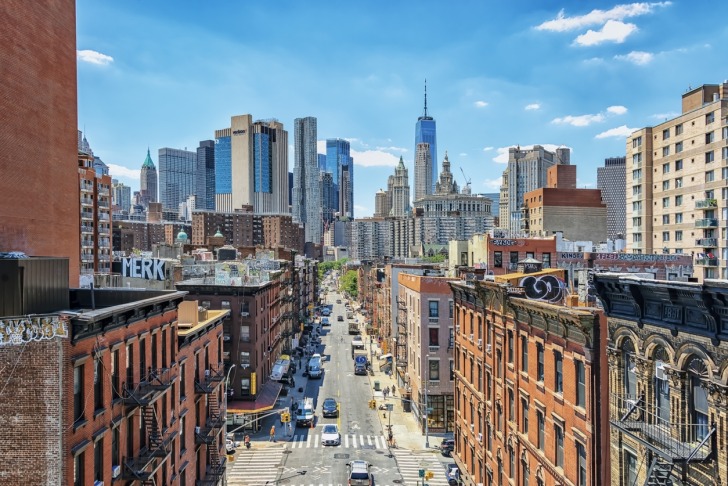
5 Safety Tips for Traveling in Manhattan
- Beware of scams! Manhattan is notorious for its scams, especially towards tourists. Some common tourist scams are taxi drivers claiming their meter is broken, unmarked cars pretending to be taxis, and street vendors selling fake subway cards and counterfeit luxury goods. Tourists would do well to be on guard at all times, and when in doubt, walk away.
- Beware of pick-pockets! Stay alert when out and keep valuables close to your body. Leave costly jewelry and other accessories in your hotel to avoid being targeted for theft.
- Don’t walk through dark areas or in parks at night, even if you’re in a safe neighborhood with a low crime rate. Stick to well-lit areas that are highly trafficked and avoid going out on your own.
- Stay alert when taking the subway and never sit in an empty car. Although the subway system is fairly safe, there’s no point in tempting criminals to make a move. Travel with others, whenever possible, or find a car with other people to minimize your risk of being targeted.
- Only buy tickets for sports, concerts, or other events from authorized vendors, so you don’t get conned. It’s next to impossible to get your money back from a con man.
Manhattan Safety Overview
READ THE FULL REPORT: Manhattan Safety Review
Safety Index: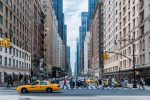
- OVERALL RISK: LOW
- TRANSPORT & TAXIS RISK: MEDIUM
- PICKPOCKETS RISK: MEDIUM
- NATURAL DISASTERS RISK: LOW
- MUGGING RISK: MEDIUM
- TERRORISM RISK: MEDIUM
- SCAMS RISK: MEDIUM
- WOMEN TRAVELERS RISK: LOW
Frequently Asked Questions
What’s the most dangerous touristy neighborhood in Manhattan?
Midtown Manhattan has the highest crime rate, due to having so many tourist attractions.
Pickpockets abound in this area looking for distracted tourists they can prey on.
Is Manhattan a good place to raise a family?
Manhattan can be an ideal place to raise a family.
The cultural diversity and abundance of kid-friendly amenities make it a great place for kids of all ages.
What’s more, there are plenty of great public and private schools to pick from.
However, the city isn’t for everyone.
The cost of living here is higher than in other parts of the country.
If you choose to relocate to Manhattan, be prepared to pay extra for the amenities this city has to offer.
Is Manhattan a Good Place to Retire?
Many retirees have chosen to make Manhattan their home, and it’s not hard to see why.
There’s no shortage of things to do and, in many neighborhoods, it’s easy to get around without a car.
What’s more, New York’s income tax system is friendly towards retirees, with all Social Security retirement benefits being tax-free.
As Manhattan is a fairly expensive place to live, however, retirees should ensure their retirement income is enough to cover their wants and needs.
